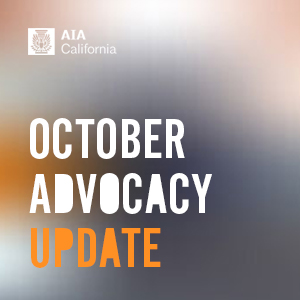Earlier this month Governor Gavin Newsom finished deciding the fate of bills that the Legislature sent to him. The outcome of several of those bills are important to the architectural profession, and are described below. Please feel free to call or email Mark Christian, Hon. AIA CA, our Director of Government Relations at 916-642-1708 or mchristian@aiacalifornia.org, if you have any questions.
Historic Preservation
Governor Newsom signed SB 451 into law, establishing the mechanism for a California Historic Preservation tax credit. SB 451 is the third attempt by Senator Toni Atkins, the California Preservation Foundation, and AIA California to establish this tax credit.
While the enactment of SB 451 is good news, the work is not done. SB 451 does not fund the tax credit; it still needs to be funded in next year’s state budget.
If fully funded in next year’s state budget, SB 451 will, among other things:
- Make the tax credits available for taxable years 2021 through 2025
- Allows for a tax credit of 20% if qualified rehabilitation expenditures on a certified historic structure, or 25% under certain conditions (for example: the project includes affordable housing
- Allows the tax credit to be used on a principal residence under certain conditions (for example: the expenses are to rehabilitate the historic character and improve the integrity of the residence, and the taxpayer has an adjusted gross income of $200,000 or less)
- Caps the credit at an aggregate annual amount of $50 million
Housing
2019 was a year in which significant housing bills were considered in the legislature. Several of them were sent to the governor, including bills on ADUs, approval process, funding for infrastructure and planning, and tenant protections.
The Terner Center for Housing Innovation at UC Berkeley compiled a good summary of those bills here.
Dynamex
The governor signed AB 5, which codifies the CA Supreme Court Dynamex ruling. That ruling made significant changes to the independent contractor text in California. Importantly, AB 5 created exemptions from the Dynamex ruling for some professionals, including when an architectural firm contracts with a licensed architect. For those “exempt” professions, the old Borello test is used.
AIA CA is working with a law firm to prepare a paper explaining the law for its Members, as it applies to the architectural profession. If you have any questions you would like answered, please email them to Mark Christian at mchristian@aiacalifornia.org as soon as possible.
School Bond
Governor Newsom signed AB 48 into law, which puts a $15 billion education bond measure on the March, 2020 statewide ballot. This will be the largest school bond measure ever, and will fund K-12 and higher education construction projects. The bond includes:
- $9 billion for preschool to K-12
- $5.2 billion for modernizing schools
- $2.8 billion for new construction
- $500 million for career technical education facilities
- $500 million for charter schools
- $2 billion for community colleges
- $2 billion for the California State University
- $2 billion for the University of California
Citizen Architect
A group of Citizen Architects met during this year’s Monterey Design Conference to discuss the Citizen Architect program, the role of Citizen Architects in our communities, how to encourage more architects to become Citizen Architects, and the effect recently signed laws might have on our communities. Expect to hear more about the Citizen Architect program in 2020.



